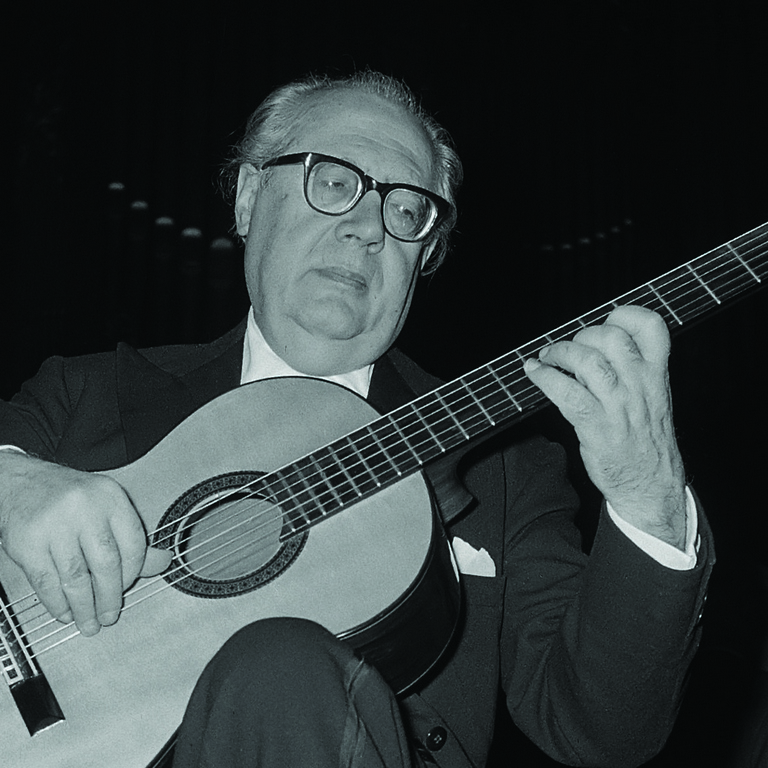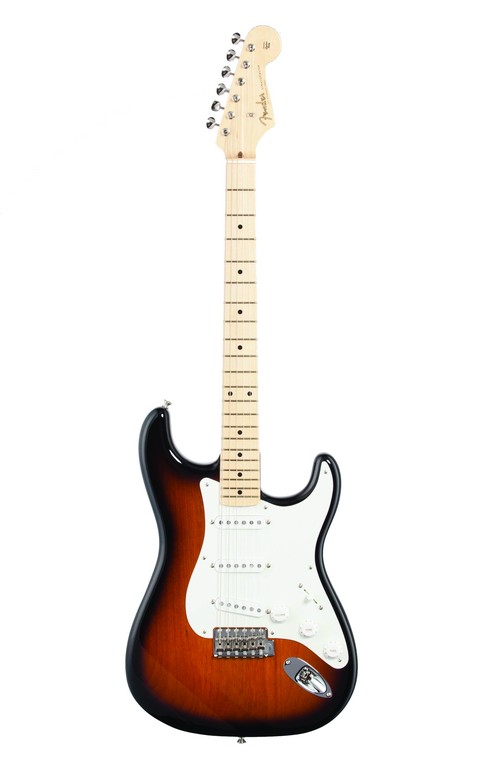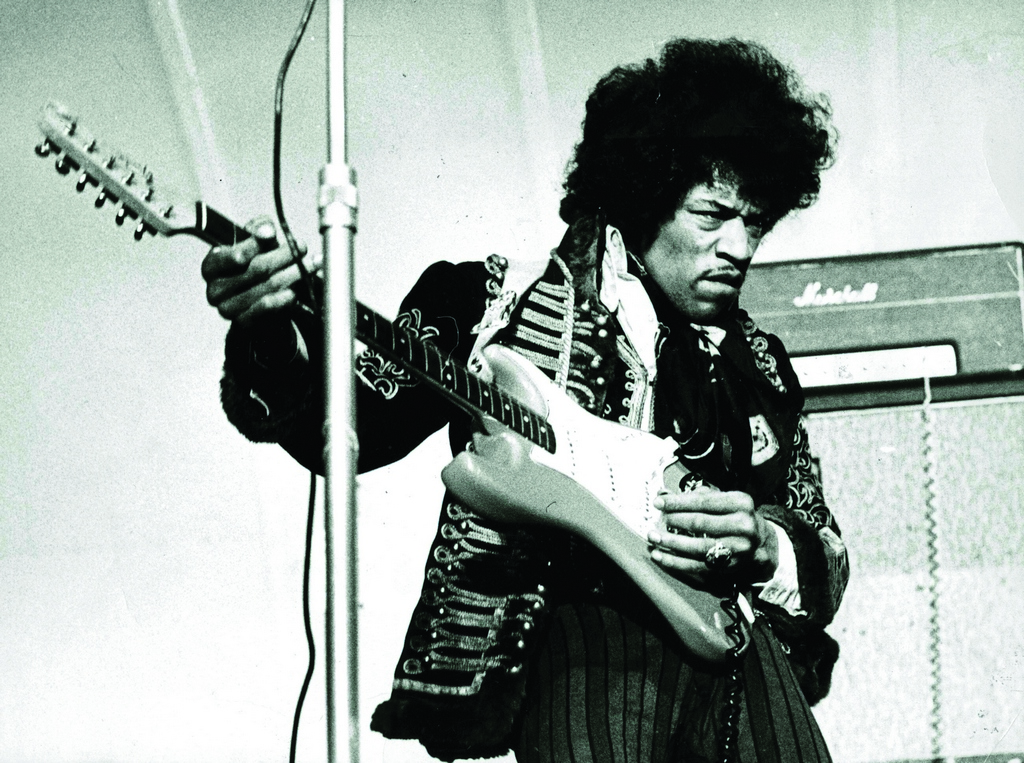Even those unfamiliar with musical terminology, and guitars in particular, are likely to recognize some of the most well-known concepts: chords, acoustic guitar, classical guitar, and soundboard. You don’t have to be Carlos Santana to throw around these terms when talking about guitars.
But what are the different types of guitars? What distinguishes an electric guitar from an acoustic or a classical one? We’re here to explain—and to celebrate the greatest guitarists and the most breathtaking solos of all time.
The Classical Guitar
It’s important to note that the classical guitar is, in essence, an acoustic instrument since its sound is produced by the resonance of its hollow body. However, there are key differences between classical and standard acoustic guitars.
In most classical guitars, three of the six strings are made of nylon, producing a softer, warmer tone suited to various musical styles—most notably classical music, as its name suggests. The instrument is typically played with the fingers and fingernails rather than a pick.
Many classical compositions were written specifically for this instrument, while others—such as several of Bach’s pieces originally composed for the lute, the guitar’s predecessor—have been adapted for it.

One of the pivotal figures in the history of classical guitar playing was Andrés Segovia, a Spanish virtuoso who gained prominence in the late 19th and early 20th centuries. Segovia’s repertoire included both romantic and modern works, and he was instrumental in adapting classical compositions originally written for other instruments.
At the time, the guitar was not held in high regard among classical musicians, who considered it a rather modest instrument unworthy of high musical artistry. However, Segovia’s impeccable technique and the effortless grace with which his fingers danced across the strings changed that perception. Thanks to him, the guitar evolved from a folk instrument into one that commanded respect in concert halls.
Even Niccolò Paganini, renowned for his unparalleled violin skills, occasionally played the guitar and composed several pieces for it, including six sonatas for violin and guitar.
In Spanish folk music, the classical guitar plays a leading role in flamenco, a genre that heavily relies on its distinctive, expressive sound.

The Acoustic Guitar
It may not seem like a big deal, but the material of the strings makes all the difference in sound. While classical guitar strings are made of nylon, acoustic guitar strings are made of metal and are thinner than those on a classical guitar.
Unlike the warm, rounded tones of a classical guitar, the acoustic guitar produces sharper, more distinct sounds, making it a staple in modern Western music genres.
For decades, leading acoustic guitar manufacturers have sought to create unique models with distinctive designs, allowing skilled musicians to explore the instrument’s full tonal potential and achieve a signature sound with bold presence.
The undisputed queen of acoustic guitars since 1883 is Martin, the legendary American guitar company. Since its founding, Martin has maintained its reputation as a pioneer in designing and producing high-quality acoustic guitars. Many of the innovations, refinements, and iconic designs in modern guitar history are attributed to this manufacturer.
In the mid-1960s, Martin ventured into electric guitars. During the 1980s and 1990s, it launched a line of electric guitars and basses under the Stinger brand. These instruments were manufactured in Korea and then shipped to Martin’s U.S. facilities for final inspection and finishing touches. However, despite Martin’s prestige, these electric models never achieved the success of its renowned acoustic guitars.

The Electric Guitar
Electric guitars come in solid, hollow, or semi-hollow body designs. Without an amplifier, they produce a relatively weak sound. Unlike acoustic and classical guitars, they lack a soundboard, relying instead on converting the vibrations of their metal strings into an electric signal. To achieve a wide range of tones, guitarists often create natural distortion through the amp’s tubes, and they typically use a pick to strum the strings.
The electric guitar’s appeal isn’t just in its signature sound—synonymous with rock, blues, and metal—but also in its striking design, which has become an iconic visual statement for many legendary musicians.
Unlike the classical guitar, the electric guitar—developed in the 1940s—was eagerly embraced by instrumental blues artists. Thanks to its unique features, such as tonal effects, feedback manipulation, and diverse picking techniques, it offers unparalleled control over sound.
Jazz virtuoso Wes Montgomery, for example, pioneered innovative improvisation methods like the Melody Chord technique, while heavy metal guitarists push the instrument’s limits with breathtaking speed and precision, leaving audiences in awe.

The Titans of Electric Guitars: Fender & Gibson
For decades, two brands have dominated the world of electric guitar manufacturing: Fender and Gibson. Fender first made its mark on music history in 1950 with the Broadcaster and Esquire models, followed by the introduction of the Stratocaster in 1954—the most widely used electric guitar in the world.
Gibson, on the other hand, had been producing guitars long before Fender. However, it wasn’t until Fender’s breakthrough success that Gibson shifted its focus to modern solid-body electric guitars. Their first and most famous model, the Les Paul, was named after the renowned country-jazz guitarist who played a pivotal role in its development.
Both Fender and Gibson have left an undeniable imprint on Western music history. Beyond their distinct tonal signatures, these brands have gained legendary status through their association with some of the greatest guitarists of all time. Fender became the weapon of choice for Jimi Hendrix and Eric Clapton, while Gibson guitars electrified audiences through the hands of Slash and Jimmy Page.
While Fender and Gibson remain the industry giants, other brands have made their mark—though none to the same extent. Notably, each company has a more affordable subsidiary: Epiphone (owned by Gibson) and Squier (owned by Fender), providing more budget-friendly alternatives without compromising too much on quality.

Accessible and Expressive
Anyone who has ever picked up a guitar for the first time has likely dreamed of coaxing legendary, instantly recognizable notes from its strings—those iconic solos that have defined generations of music. The greatest guitarists in modern history developed their own unique techniques, forging intimate, emotional connections with their instruments.
But why has the guitar, above all other instruments, earned such a special status? Perhaps because it is always there—accessible, versatile, and inviting. Even beginners can produce pleasant sounds without enduring years of grueling practice. And even those without exceptional musical talent can, with a little effort, convince the strings to harmonize in a way that feels natural and rewarding.
The electric guitar, in particular, allows for an almost infinite range of sonic possibilities, thanks to effect pedals—electronic devices that alter and enhance the instrument’s signal. Among the most famous effects are the wah-wah pedal, beloved by Jimi Hendrix, and the delay effect, a staple of Brian May’s soaring live performances.
Another remarkable quality of the electric guitar is its ability to adapt across a vast spectrum of tones and styles. Whether rhythmic or melodic, Western or Eastern, the guitar seamlessly molds itself to the hands of the player, transcending cultures, rhythms, and eras.

The Stradivarius of Guitars
When discussing violin craftsmanship, the name Antonio Stradivari is the first to come to mind—his name has become synonymous with the pinnacle of violin making. In the world of guitars, however, no single luthier has achieved such universal status. Yet, among the greatest guitarists, many have designed and customized their own instruments to create signature sounds that set them apart.
Legends like Jimmy Page, Jimi Hendrix, Eric Clapton, Yngwie Malmsteen, Joe Satriani, David Gilmour, Eddie Van Halen, and Pete Townshend have all played uniquely modified guitars, tailored to their artistic vision—ensuring their sound remains as iconic as their playing.

Signature Guitars and Limited Editions
As the guitar is a unique instrument that marks and symbolizes cultural milestones, renowned guitar manufacturers and luthiers constantly strive to create instruments that will one day become sought-after vintage pieces. To achieve this, they craft one-of-a-kind guitars or limited-edition models, use rare types of wood, showcase individual items with special qualities, or embellish certain models with stunning inlays.
Another way to distinguish guitars from unique series is by incorporating the signature of a famous artist or guitarist. These are known as signature guitars and proudly bear the name of the musician who has endorsed or sometimes even designed the instrument. These special guitars are often sold at high prices, with the hope that their value will appreciate over time in the collectors’ market.

Record-Breaking Guitars
The image of famous musicians smashing their guitars on stage in a frenzy of wild playing is well-known to music lovers. However, there are those who prefer to break something else related to their guitars.
At a public auction held in New York in June 2019, where David Gilmour, the guitarist and singer of Pink Floyd, sold off a collection of nearly 130 guitars, multiple records were broken in the world of guitar auctions. Among the items sold was the iconic 1969 Fender Stratocaster known as the “Black Strat”, which Gilmour played during recordings for Pink Floyd albums such as The Dark Side of the Moon and Wish You Were Here. The famous guitar sold for a record-breaking $3.975 million—a staggering price, many times higher than its estimated pre-auction value of $100,000 to $150,000.
The Most Expensive Guitars Ever Sold
The most expensive guitar ever sold at auction until that point was the Fender Stratocaster played by Brian Adams during a charity concert for the victims of the 2004 Southeast Asia tsunami disaster. This famous Fender featured signatures from 19 musicians, including Sting, Paul McCartney, Eric Clapton, and Jimmy Page, and sold for a relatively modest (compared to Gilmour’s sale) $2.7 million.
In 2004, a guitar owned by Eric Clapton also fetched a notable sum at auction. The generous buyer paid $960,000, which also went to charity.
The Greatest Guitar Solos
No article about the wonders and history of the guitar would be complete without a listening list of iconic guitar solos—those that have been part of our collective soundtrack for decades.
We invite you to embark on a musical journey through the brilliant sounds produced by the greatest guitarists of all time. Look them up on YouTube and let yourself be mesmerized by these legendary solos:
- Jimi Hendrix
“All Along the Watchtower” - Eric Clapton
“Crossroads” - Jimmy Page, Led Zeppelin
“Stairway to Heaven” - Mark Knopfler, Dire Straits
“Sultans of Swing” - David Gilmour, Pink Floyd
“Comfortably Numb” - Ritchie Blackmore, Deep Purple
“Highway Star” - Carlos Santana
“Black Magic Woman”
“Still Got the Blues” - Guns N’ Roses
“Sweet Child O’ Mine” - Eagles
“Hotel California”
And, of course, how could we forget:
- The Beatles
“While My Guitar Gently Weeps”
Interestingly, when the Beatles wrote this famous song, they did not anticipate that none of them would be able to play it to the high standard they were aiming for. In their frustration, they invited Eric Clapton to contribute his golden fingers and play the guitar solo. This song remains one of the Beatles’ most iconic and successful tracks, reaching #135 on Rolling Stone magazine’s list of the “500 Greatest Songs of All Time.” Does the result justify their decision? You judge for yourself.











